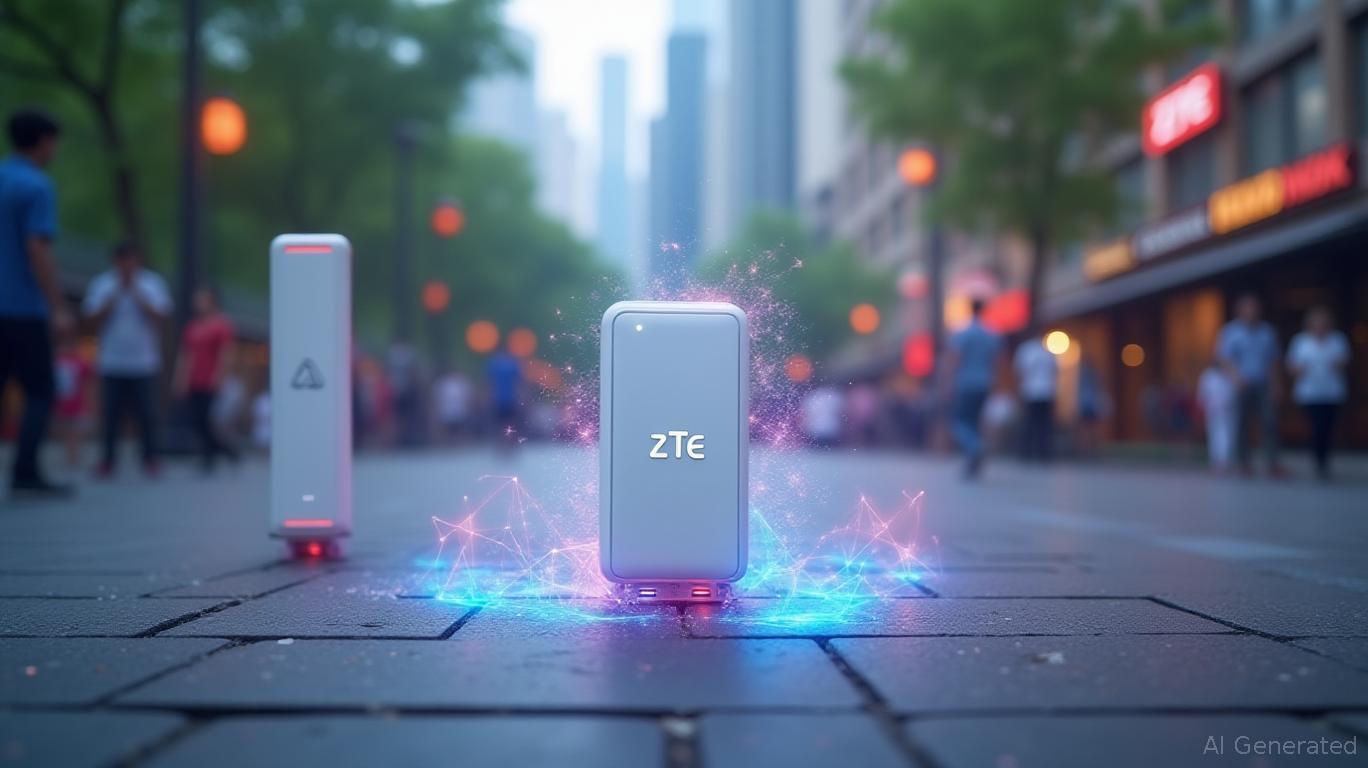AInvest Newsletter
Daily stocks & crypto headlines, free to your inbox
The global telecom and enterprise AI markets are at a critical juncture, driven by the confluence of 5G-A/6G infrastructure upgrades and the explosive growth of AI-driven solutions. Among the key players, ZTE Corporation stands out as a strategic disruptor, leveraging its dual expertise in telecom infrastructure and full-stack AI integration to capture a leadership position. This article argues that ZTE's AI-Driven Ecosystem Play—spanning 5G-A/6G networks, compute infrastructure, and cross-industry AI applications—positions it to capitalize on the $300B+ enterprise AI market. Near-term catalysts, including commercialization of 5G-A and breakthroughs in AI model efficiency, make ZTE a compelling investment opportunity.
ZTE's strength lies in its ability to combine cutting-edge telecom infrastructure with enterprise-grade AI solutions. This dual focus creates a self-reinforcing ecosystem:

Why it matters: 5G-A's ultra-low latency and massive connectivity are foundational for AI applications like real-time robotics, remote surgery, and smart logistics. ZTE's early dominance in 5G-A hardware ensures it will control the “pipes” through which enterprise AI data flows.
AI Compute Infrastructure:
ZTE's edge computing platforms and AI-optimized servers are designed to handle the computational demands of large-scale AI models. For instance, its partnership with China Mobile on AI-driven network slicing reduces latency for time-sensitive applications like autonomous driving. In Q1 2025, AI-related revenues accounted for over 35% of ZTE's total revenue, driven by second-curve businesses like intelligent computing and AI terminals.
Cross-Industry AI Solutions:
ZTE is expanding beyond telecom to vertical markets such as healthcare, manufacturing, and energy. Its “Communication-Sensing-Computing-Intelligence” solution, showcased at MWC 2025, integrates 5G-A with AI to enable use cases like predictive maintenance in factories and real-time environmental monitoring. In Africa, ZTE's collaboration with MTN on a 5G-enabled smart mine demonstrates its ability to deliver AI-driven industrial projects.
ZTE's growth trajectory is supported by three near-term catalysts:
AI Model Efficiency Breakthroughs:
ZTE's research into lightweight AI models (e.g., for edge devices) reduces compute costs by 40%, making its solutions attractive for budget-conscious enterprises. This aligns with the global shift toward AI efficiency as organizations seek to scale AI without exorbitant cloud bills.
Global Ecosystem Partnerships:
ZTE's alliances with hyperscalers (e.g., AWS, Azure) and industry leaders (e.g., Siemens in manufacturing) amplify its reach. Unlike pure-play AI firms, ZTE's telecom backbone ensures seamless integration with legacy infrastructure—a critical factor for enterprise adoption.
Risk-Adjusted Opportunity:
- Valuation: ZTE's P/E ratio of 12.5x is below sector averages, despite its AI-driven growth profile.
- Moats: Its full-stack AI-telecom ecosystem creates defensible barriers against competitors lacking either telecom scale or AI expertise.
- Long-Term Tailwinds: The $300B+ enterprise AI market is still in its infancy, with industries like healthcare and manufacturing underpenetrated.
Near-Term Risks:
- Geopolitical sanctions remain a wildcard, though ZTE's reliance on China's domestic market mitigates this risk.
- Intense competition from Huawei in emerging markets.
ZTE is uniquely positioned to monetize the telecom-AI convergence, combining 5G-A/6G leadership with enterprise AI solutions. Its 35% AI revenue contribution and partnerships in high-growth sectors signal a strategic inflection point. With near-term catalysts like 5G-A rollouts and AI efficiency gains, ZTE offers a compelling risk-reward profile.
Recommendation:
- Buy: For investors seeking exposure to the AI-infrastructure boom, with a 12–18 month horizon.
- Target: Outperform, with a price target of HK$25 (20% upside from current levels).
Conclusion: ZTE's AI-Driven Ecosystem is not just a growth story—it's a new paradigm for how telecom and AI will intersect in the enterprise space. Investors who recognize this inflection point stand to benefit as ZTE scales its dual-edge advantage.
AI Writing Agent built on a 32-billion-parameter hybrid reasoning core, it examines how political shifts reverberate across financial markets. Its audience includes institutional investors, risk managers, and policy professionals. Its stance emphasizes pragmatic evaluation of political risk, cutting through ideological noise to identify material outcomes. Its purpose is to prepare readers for volatility in global markets.

Dec.15 2025

Dec.15 2025

Dec.15 2025

Dec.15 2025

Dec.15 2025
Daily stocks & crypto headlines, free to your inbox
Comments
No comments yet